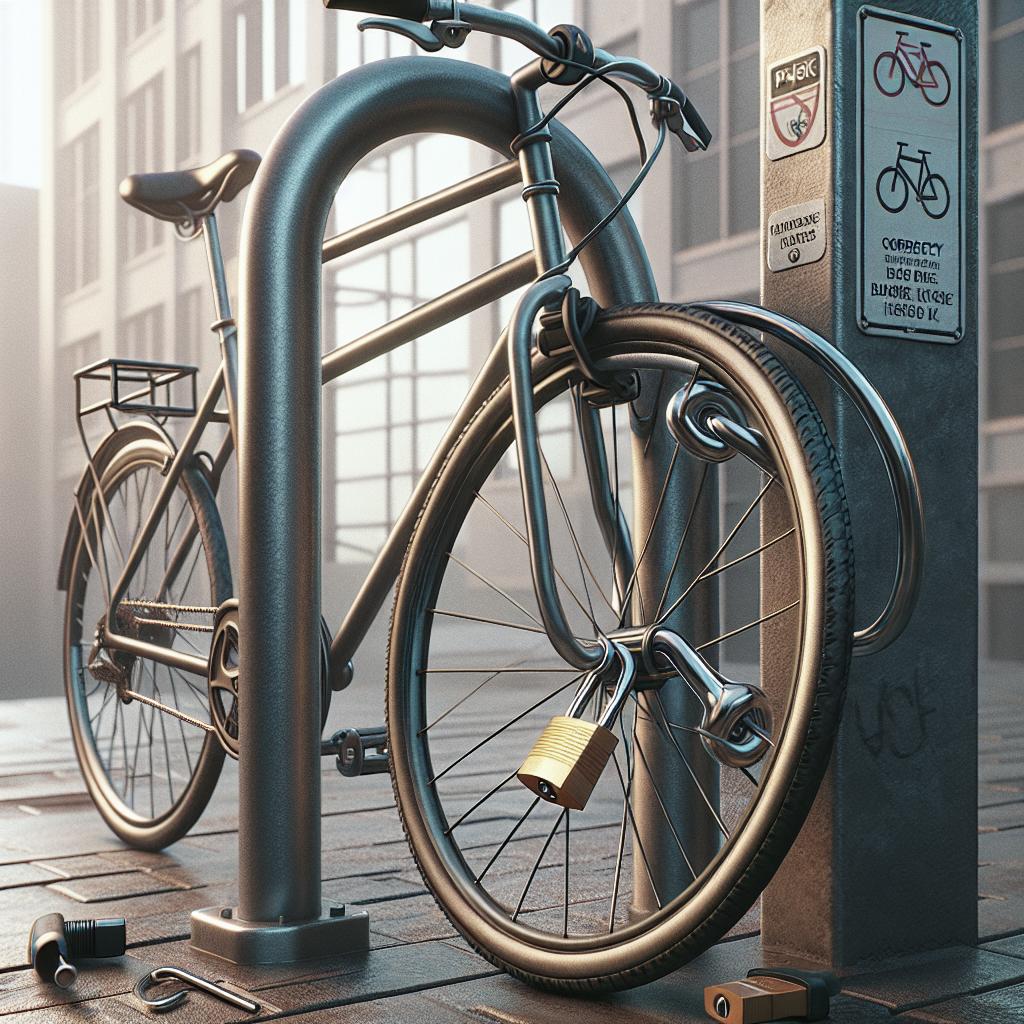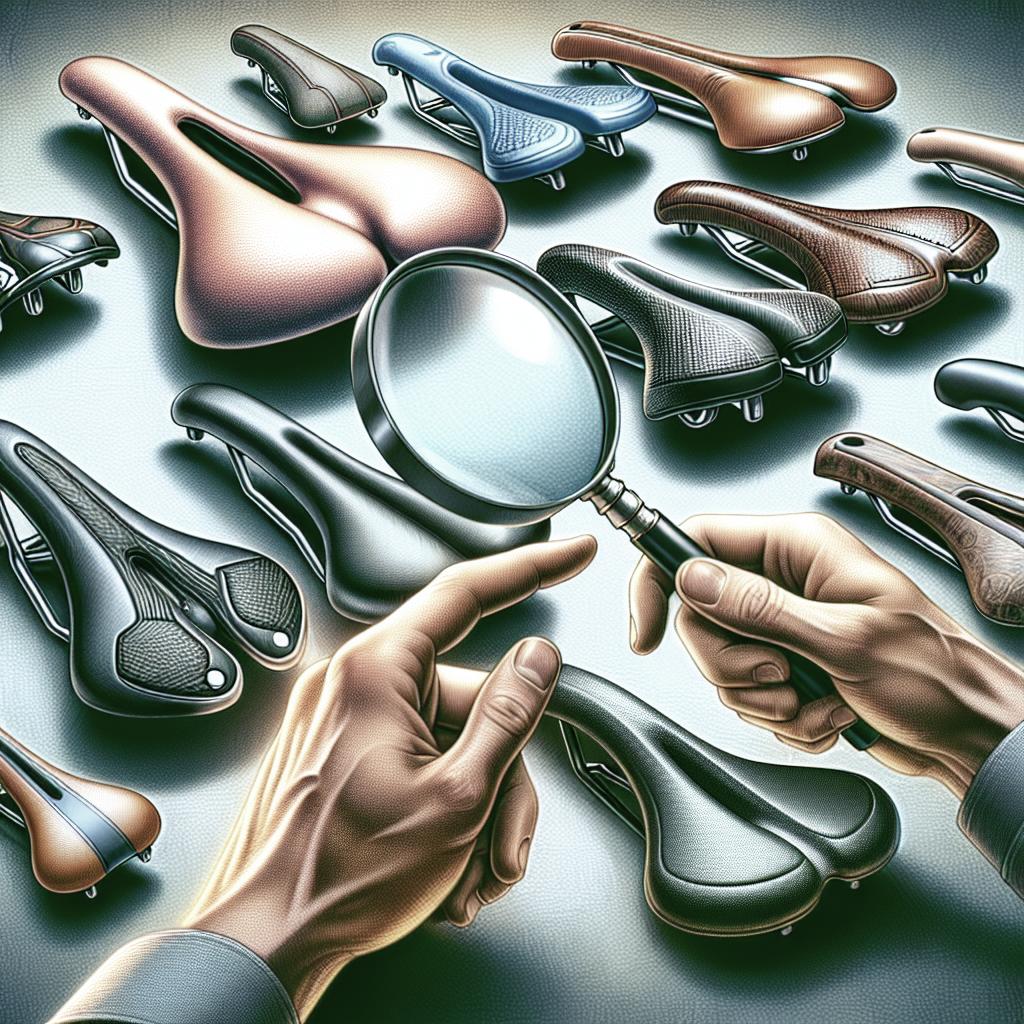“`html
How to Secure a Bike Against Theft
Bike theft is an issue that can affect anyone, from casual riders to dedicated cyclists. Securing your bike properly can save you from heartache and financial loss. This guide will help you understand the different strategies for safeguarding your bike against theft, from choosing the right lock to knowing the best places to secure your bike. We’ll explore what bike thieves look for, the importance of logging your bike’s serial number, and cutting-edge anti-theft systems. Additionally, we’ll cover the uncomfortable topic of what to do if your bike is stolen and provide insights into how stolen bikes are utilized and the steps you can take to retrieve a stolen bike. Let’s arm yourself with knowledge to keep your bike safe, providing peace of mind every time you park it.
Make sure your lock is up to the task
Choosing the right lock is crucial as it’s your first line of defense against bike theft. Not all locks offer the same level of protection, so understanding the security levels can aid in making an informed decision. Consider investing in a lock that has been tested and rated by security organizations such as Sold Secure or ART. These organizations offer ratings based on how well a lock withstands various forms of attack.
Security features such as pick-resistant locks or shrouded shackles increase the difficulty for potential thieves. Purchasing a high-quality lock might entail a higher upfront cost, but it’s a valuable investment compared to the potential loss of your bike. Always prioritize functionality and reliability over convenience when selecting a lock.
What is the best type of bike lock?
There are several types of bike locks available, each with its own pros and cons. U-locks, also known as D-locks, are highly recommended because of their robustness and resistance to cutting tools. They are generally cumbersome to break with standard thief tools and provide a good deterrent against quick theft attempts. Keep an eye out for ones with square shackles as they provide additional strength.
For riders seeking flexible locking solutions, chain locks offer versatility and good security. Opt for chains made from hardened steel, which can resist cutting attempts better than thinner materials. Another option is the folding lock, which combines aspects of U-locks and chains. While slightly less secure than U-locks, their compactness and ease of transport make them a good balance for commuting cyclists.
Get The Leadout Newsletter
Staying informed about the latest in cycling, security innovations, and local crime trends can significantly enhance your bike theft prevention strategy. Subscribing to newsletters such as The Leadout, which offers updates on cycling news and tips, keeps you connected to the cycling community and aware of any potential threats to your bike’s security.
Newsletters often include insights and reviews on the latest bike gear, including locks and security devices, helping you to stay ahead of the curve. Additionally, they can provide you with exclusive offers and partnerships with security product manufacturers, allowing you to capitalize on discounts for high-quality locks and other security necessities.
Use your lock correctly
Merely owning a good lock isn’t enough; proper usage is key to maximizing security. Always secure your bike to a sturdy, immovable object that can’t be easily bypassed or lifted over. Ensure that the lock goes through both the frame and the rear wheel, as thieves can easily remove a wheel without affecting the rest of the bike.
Whenever possible, lock your bike in a busy, well-lit area where potential thieves are less likely to feel comfortable spending time breaking a lock. Try to fill as much of the inside space of the lock as possible, as this makes it harder to wedge tools inside. Even with multiple security devices, they are only as effective as the way they are used.
Plan for the worst, hope for the best
While taking preventive steps can significantly reduce your bike’s risk of being stolen, it’s important to prepare for the possibility that it might still happen. Register your bike’s serial number with a national registry, which can act as proof of ownership if it’s recovered. Take detailed photos of your bike, including unique features and any damage that distinguishes it from others.
Additionally, consider getting insurance coverage for your bike. Many insurers offer coverage plans specifically tailored for bicycles, which can include theft coverage as part of your renter’s or homeowner’s policy. Protecting yourself with insurance ensures you’re financially prepared to replace your bike if necessary.
Where is the serial number on a bike?
The serial number of a bike is a unique identifier and plays a crucial role if your bike is stolen. Typically, you will find the serial number stamped on the underside of the bottom bracket, which is where the pedals attach to the bike. Some manufacturers place the serial number on the head tube, rear stays, or under the crank.
Make it a point to record the serial number when you purchase your bike and keep it in a secure location. In the unfortunate event of a theft, being able to provide a serial number greatly increases your chances of recovering your bike. Always ensure this information is easily accessible, and consider adding it to any bike registry you participate in.
Know where to lock your bike
Theft often occurs in areas where bikes are infrequently checked or left unattended for extended periods. Whenever possible, lock your bike in a high-traffic area since visibility can serve as a natural deterrent to thieves. Look for designated bike racks or other authorized structures designed for bicycles.
Avoid locking your bike in isolated areas or places with inconsistent foot traffic, as these provide opportunities for thieves to work unnoticed. Urban spaces next to busy streets, in front of popular cafes, or near transport hubs are preferable locking locations with higher visibility and likely surveillance.
What bike thieves look for
Understanding what bike thieves target can help in crafting a prevention strategy. Generally, they look for bikes with quick releases on wheels or seats, providing an easy opportunity to disassemble and take parts. Thieves also focus on poorly secured bikes or those using low-quality locks that can be easily defeated.
In addition, luxury brands or models and bikes parked in the same place for extended periods are greater targets. By regularly changing your parking location and ensuring that your bike doesn’t display easy-to-remove components, you drastically reduce the appeal to opportunistic thieves.
What is the best alarm bike lock?
Alarm bike locks add an extra layer of security with auditory deterrents that can scare off potential thieves. One of the best alarm-equipped locks is the lock that emits a loud alarm on tampering, adding to the time pressure perceived by thieves as they attempt to steal your bike.
Brands like ABUS offer combination lock systems with built-in alarms that sense movements caused by cutting attempts. Similar products from other manufacturers can vary in sensitivity and sound intensity, so choose one that balances responsiveness with volume to ensure effectiveness in your environment.
Best bike anti-theft system
Beyond locks, an effective anti-theft system can significantly reduce the risk of bike theft. Systems featuring GPS tracking can help you locate your bike in real-time if it’s ever stolen. Popular devices like the Tile or GPS-enabled locks from companies like LINKA enhance security by enabling tracking and additional smart lock features.
Many cyclists also opt for tamper-resistant bolts, which secure high-theft components like wheels and saddles without compromising the bike’s usability. Implementing an anti-theft system that combines deterrents and tracking is a comprehensive approach for high-value bike protection.
What to do if your bike is stolen?
If your bike is stolen, acting swiftly improves your chances of retrieval. File a police report immediately, providing your bike’s serial number, photographs, and any distinguishing features. In parallel, check local classifieds and online marketplaces like Craigslist and eBay where your bike might be listed for sale.
Enlist the help of local cycling groups who can keep an eye out for your bike. Social media is also a powerful tool; post about your stolen bike in local community pages and cycling networks to spread the word quickly. Remember, quick action can be crucial in recovering your bike.
What do people do with stolen bikes?
Stolen bikes are often quickly repurposed or resold. Thieves may disassemble them for parts, reducing the chance of recognition when sold individually. They may also sell intact bikes in different cities or online to avoid detection. Understanding this helps emphasize the importance of rapid response and reporting stolen bikes.
Another possibility is for stolen bikes to be used in a cycle of theft, sold to individuals who unknowingly become potential victims themselves. Raising awareness about buying bikes from reputable sources can minimize unwitting participation in this cycle.
How to retrieve a stolen bike
Recovering a stolen bike requires persistence and a strategic approach. Leverage technology by following your GPS tracking device if installed, and provide any tracking data to law enforcement upon filing your report. Keep monitoring online listings to spot your bike.
In some instances, checking flea markets or pawn shops where stolen goods frequently cycle can be effective. Always approach such situations cautiously and request police assistance if you believe you’ve found your bike. Remember, safety is paramount when attempting to retrieve a stolen bike.
Lessons Learned
| Key Takeaways | Details |
|---|---|
| Choosing and Using Locks | Invest in U-locks or chain locks and use them properly to secure frames and wheels. |
| Strategic Parking | Always park in well-lit, high-traffic areas, and avoid leaving your bike unattended for long. |
| Additional Security Tools | Consider alarm locks and GPS tracking systems for enhanced protection. |
| Immediate Actions for Stolen Bikes | File a police report, check online listings, and engage the community for recovery. |
“`


